Constantinople Conference
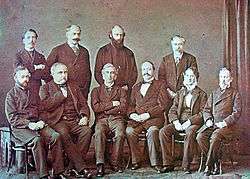
The 1876–77 Constantinople Conference (Turkish: Tersane Konferansı "Shipyard Conference", after the venue Tersane Sarayı "Shipyard Palace") of the Great Powers (Britain, Russia, France, Germany, Austria-Hungary and Italy) was held in Constantinople (now Istanbul)[1] from 23 December 1876 until 20 January 1877. Following the beginning of the Herzegovinian Uprising in 1875 and the April Uprising in April 1876, the Great Powers agreed on a project for political reforms both in Bosnia and in the Ottoman territories with a majority[2] Bulgarian population.
Participants
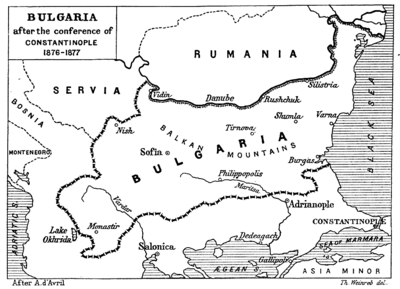
The Great Powers were represented at the conference respectively by:[3]
- Lord Salisbury and Sir Henry Elliot;
- Count Nikolay Ignatyev (historical spelling Nicolai Ignatieff);
- Count Jean-Baptiste de Chaudordy and Count François de Bourgoing;
- Baron Karl von Werther;
- Baron Heinrich von Calice and Count Ferenc Zichy;
- Count Luigi (Lodovico) Corti.
Of these, Lord Salisbury, Count de Chaudordy and Baron von Calice were Ambassadors Plenipotentiary to the conference, while Count Ignatyev, Sir Henry Elliot, Count de Bourgoing, Baron von Werther, Count Zichy and Count Corti were the resident Ambassadors of their countries in Constantinople.
The US Consul General in Constantinople, Eugene Schuyler also took an active part in drafting the conference decisions.[4]
The Ottoman Empire was represented at the conference by:
Midhat Pasha was the Grand Vizier (First Minister), and Saffet Pasha the Foreign Minister of the Ottoman Empire. Although the Ottoman representatives participated in the plenaries of the conference, they were not invited to the preceding working sessions at which the Great Powers negotiated their agreement.
Lord Salisbury and Count Ignatyev played a leading role in the process. Ignatyev was trying to dispel British misgivings about Russia’s assumed role of a protector of the Orthodox Slavs being but a disguise of its drive to take over the Black Sea Straits and Constantinople itself and thus – as Prime Minister Disraeli feared – potentially threaten the vital Mediterranean routes to British India.[5] On his part, Salisbury saw the conference as a promising opportunity for mapping out a comprehensive deal with Russia over their conflicting territorial ambitions in Central Asia.[6]
Decisions
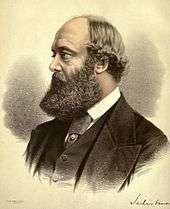

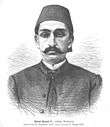
Bosnia
The conference envisaged the creation of an autonomous province including Bosnia and most of Herzegovina, while a southern part of the latter was to be ceded to the Principality of Montenegro.
Bulgaria
The Great Powers agreed on a substantial Bulgarian autonomy to take the form of two new Ottoman provinces (vilayets) established for the purpose: Eastern, with capital Tarnovo, and Western, with capital Sofia.
The conference determined that, as of the late 19th century, the Bulgarian ethnic territories within the Ottoman Empire extended to Tulcea and the Danube Delta in the northeast, Ohrid and Kastoria in the southwest, Kirklareli and Edirne in the southeast, and Leskovac and Niš in the northwest. These territories were to be incorporated into the two Bulgarian autonomous provinces as follows:
- Eastern Bulgarian autonomous province, including the Ottoman sandjaks – second level administrative divisions – of Tırnova, Rusçuk, Tulça, Varna, Sliven, Filibe (bar the kazas – third level administrative divisions – of Sultaneri and Ahıçelebi), and part of the Edirne sandjak including the kazas of Kırkkilise, Mustafapaşa and Kızılağaç.[7][8]
- Western Bulgarian autonomous province, including the sandjaks of Sofya, Vidin, Niş, Üsküp, Manastır (bar the kazas of Debre and Korça), the Nevrokop, Menlik and Demirhisar kazas of the Serez sandjak, and the kazas of Ustrumca, Köprülü, Tikveş and Kesriye.[7][8]
The Great Powers elaborated in detail the constitutional, legislative, executive, defense and law enforcement arrangements, cantonal administrative system, taxation, international supervision etc. for the proposed autonomous provinces.
Conclusion
The agreed decisions of the six Great Powers were formally handed over to the Ottoman Government on 23 December 1876,[9] dismissing the opening Ottoman suggestions that the Conference's mission might have been obviated by a new Ottoman Constitution approved by Sultan Abdul Hamid II that same day.[10] In the subsequent conference plenary sessions the Ottoman Empire submitted objections and alternative reform proposals that were rejected by the Great Powers, and attempts to bridge the gap did not succeed.[11] Eventually, on 18 January 1877 Grand Vizier Midhat Pasha announced the definitive refusal of the Ottoman Empire to accept the conference decisions.[12]
Legacy
The failure of the Ottoman Government to implement the decisions of the Constantinople Conference triggered the 1877–1878 Russo-Turkish War, depriving at the same time the Ottoman Empire – in contrast to the preceding 1853–1856 Crimean War – from Western support.[12]
Tsarigrad Peak in Imeon Range on Smith Island in the South Shetland Islands, Antarctica is named after the conference (‘Tsarigrad’ being the old Bulgarian name for Constantinople).[13]
See also
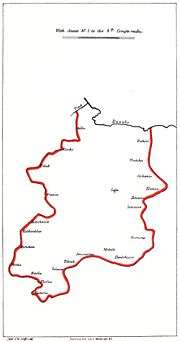 Western Bulgarian autonomous province |
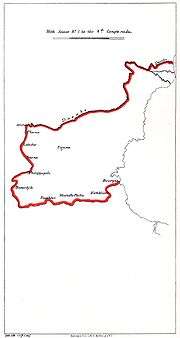 Eastern Bulgarian autonomous province |
Maps
- Bulgaria in the borders after the Treaties of Constantinople, San-Stephano, Berlin, London, Bucharest and Neuilly. Scale 1:1600000 map. (in German)
Notes
- ↑ Finkel, Caroline, Osman's Dream, (Basic Books, 2005), 57; "Istanbul was only adopted as the city's official name in 1930.".
- ↑ Correspondence respecting the Conference at Constantinople and the affairs of Turkey: 1876–1877. Parliamentary Papers No 2 (1877). p. 340.
- ↑ H. Sutherland Edwards. Sir William White K.C.B., K.C.M.G., For Six Years Ambassador at Constantinople. London: John Murray, 1902.
- ↑ The Eastern Question. The Constantinople Conference. What May Be Expected from the Meeting. The Foreign Representatives and How They Are Treated. The Report of the American Consul General. Various Items of Interest. New York Times, 31 December 1876.
- ↑ Buckle G.E., W.F. Monypenny, The Constantinople Conference, in: The Life of Benjamin Disraeli, Earl of Beaconsfield. Vol. VI, p. 84.
- ↑ Sneh Mahajan. British Foreign Policy, 1874–1914: The role of India. London and New York: Routledge, 2002. p. 40.
- 1 2 Conference de Constantinople. Reunions Préliminaires. Compte rendu No. 8. Scéance du 21 décembre 1876. Annexe III Bulgare. Règlement organique. (in French)
- 1 2 Further Correspondence respecting the affairs of Turkey. (With Maps of proposed Bulgarian Vilayets). Parliamentary Papers No 13 (1877).
- ↑ Correspondence respecting the Conference at Constantinople and the affairs of Turkey: 1876–1877. Parliamentary Papers No 2 (1877). p. 140.
- ↑ L.S. Stavrianos. Constantinople Conference, in: The Balkans Since 1453. Austin: Holt, Rinehart and Winston, 1963.
- ↑ Turkey and the Great Powers. The Constantinople Conference. The Commissioners' Last Proposals to the Porte. An Ultimatum Presented the Great Dignitaries of State to Decide Upon an Answer. New York Times, 16 January 1877.
- 1 2 N. Ivanova. 1876 Constantinople Conference: Positions of the Great Powers on the Bulgarian political question during the Conference. Sofia University, 2007. (in Bulgarian)
- ↑ Tsarigrad Peak. SCAR Composite Gazetteer of Antarctica.
References
- R.W. Seton-Watson. Disraeli, Gladstone and the Eastern Question: A Study in Diplomacy and Party Politics. New York: W.W. Norton & Co., 1972. p. 108. ISBN 978-0-393-00594-3
- George Washburn. Fifty Years in Constantinople and Recollections of Robert College. Boston and New York: Houghton Mifflin, 1909. p. 115–119. ISBN 978-1-4067-0530-0